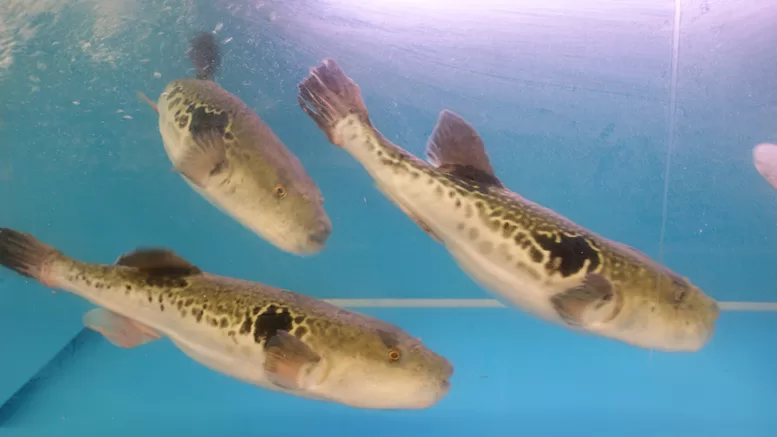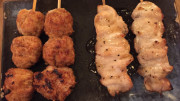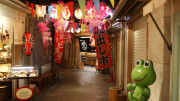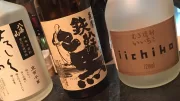Poisonous pufferfish are a specialty at many Japanese restaurants, particularly in Osaka. Known as fugu in Japan, these fish belong to several species, depending on the region. One of the most popular is the Takifugu, also known as the tiger blowfish. These blubbery, leathery-looking fish are among the deadliest in the world. They generally have sharp spikes that protrude when they puff up, acting as a defense mechanism.

Fugu contains lethal amounts of a powerful poison called tetrodotoxin, which is concentrated in certain organs. If consumed, the poison paralyses the victim’s muscles and causes the respiratory system to shut down, ultimately leading to death by asphyxiation. There is no known antidote, but a person can sometimes be saved by an artificial respirator until the poison wears off.
Because of its deadly nature, fugu offal is banned from sale in restaurants and must be stored as hazardous waste. This regulation was introduced after World War II, when many people died from eating discarded fugu scraps during food shortages. Any restaurant selling fugu must be licensed, ensuring proper handling of this potentially fatal delicacy. Fugu can often be seen alive in fish markets, but they must be killed and prepared by a licensed professional who removes the toxic organs.
Studies have shown that fugu develop their poison by consuming certain types of bacteria. In recent years, fish farming operations have successfully bred fugu in controlled environments, keeping them away from these bacteria and producing toxin-free fish.
While strict regulations govern the sale and preparation of fugu, farmed, non-poisonous varieties are now widely available in fish markets for home cooking. However, particular care should still be taken when handling the fish.
Fugu is one of the most expensive foods in Japan. A single market fish can cost anywhere from 4,000 to 10,000 yen, while a restaurant-prepared dish can be several times more expensive. In high-end restaurants, a serving of fugu may cost hundreds of US dollars.
Fugu can be cooked in various ways, including fried, grilled, stewed, or pickled, but it is particularly popular raw in sashimi dishes. It is said to have a delicate, slightly chewy texture and a subtle, refined flavour. The roe (milt) is also highly sought after.
Fugu is most popular in the colder months, when the fish put on extra body fat, making them more flavourful. Japan consumes around 20,000 tons of fugu annually. However, the Japanese Emperor is strictly forbidden from eating fugu due to its high risk, as mandated by law.
Due to its growing popularity, Japan has implemented regulations to protect wild fugu populations. Today, many fugu are harvested from floating fish farms.
The city of Shimonoseki, in Yamaguchi Prefecture, is considered the fugu capital of Japan, though fugu is readily available throughout the country during its season.
Fugu is not only a culinary experience but also a cultural icon. In many entertainment districts, particularly in Osaka, you’ll find massive fugu-shaped balloons suspended outside fugu restaurants. These glowing signs light up at night, creating a spectacular sight and making for brilliant photo opportunities for visitors to Japan.
Despite its deadly reputation, fugu remains one of Japan’s most fascinating delicacies, blending danger, tradition, and culinary excellence.




